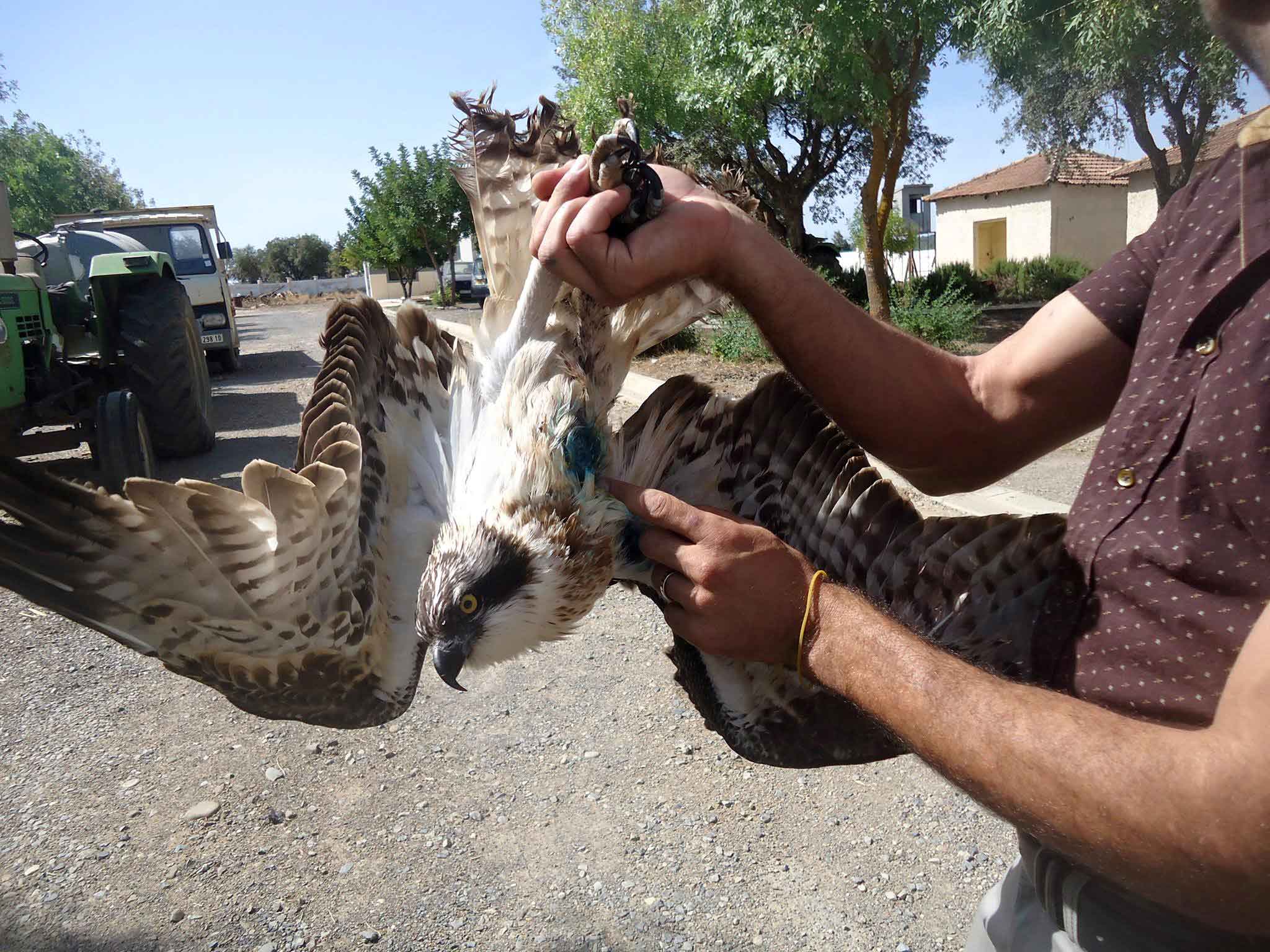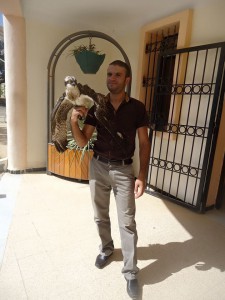 We recently received some shocking news from Algeria concerning one of our young ospreys called PP5 (nicknamed “Chernobyl” due to the markings on the back of his head which resemble a radiation symbol). This male had been found shot by a poacher in the region of the Djurdjura National Park, about 100 km east of the capital city Algiers.
We recently received some shocking news from Algeria concerning one of our young ospreys called PP5 (nicknamed “Chernobyl” due to the markings on the back of his head which resemble a radiation symbol). This male had been found shot by a poacher in the region of the Djurdjura National Park, about 100 km east of the capital city Algiers.

The good news is that he is alive, thanks to the Park’s veterinarian Mr Toufik Brahimi, who operated on him and removed two shotgun pellets from his chest and the base of his wing. Mr Brahimi then contacted the Swiss Ornithological Station at Sempach, based on the inscription marked on his ring. We are now in direct contact with Mr Brahimi to discuss the best way to take care of PP5. He is fed daily with fresh fish and the latest news indicates that he seems to be on the road to recovery. Note that PP5 had left the Swiss reintroduction site on September 11, and had the misfortune to be shot on the 16th, exactly 5 days after his departure and some 1,200 km away after crossing the Mediterranean Sea.
It is not yet possible to know if PP5 will make a full recovery from his terrible ordeal although we are hopeful. Coincidentally Mr Brahimi remembered meeting us (Denis Landenbergue and Wendy Strahm) when we visited the National Park of Djurdjura in 2008. One additional reason for him, as if it were needed, to do his best to save what he refers to as “our bird”.
It is well known that only a third of young Ospreys usually survive to adulthood. There are many possible causes of loss: natural predation, ocean gales, sand storms, collisions with vehicles, wires or electrical lines, poaching or shooting through ignorance, etc.
